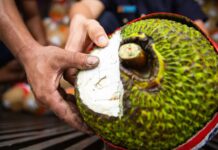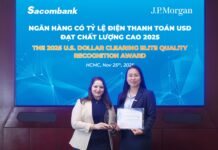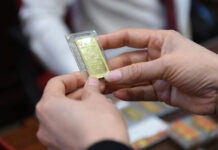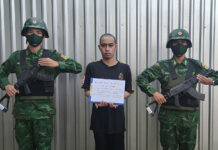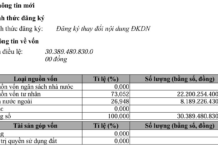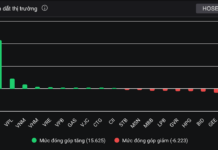Made-in-Vietnam Harvesting Technology Popularized in Africa
The success of 10 Khang Dan breed rice fields in Angola has made Linh Phillip, the owner of Linh Phi farm, proud. From the early days of “holding their breath” to sow seeds, to anxiously watching the rice grow and ripen, everyone on the farm went through many emotions.
In mid-April, Linh Phi farm began to harvest rice. Apart from the group of Vietnamese workers and Angolan workers of the farm, many people from the neighboring Bota village also came to help with the harvest.
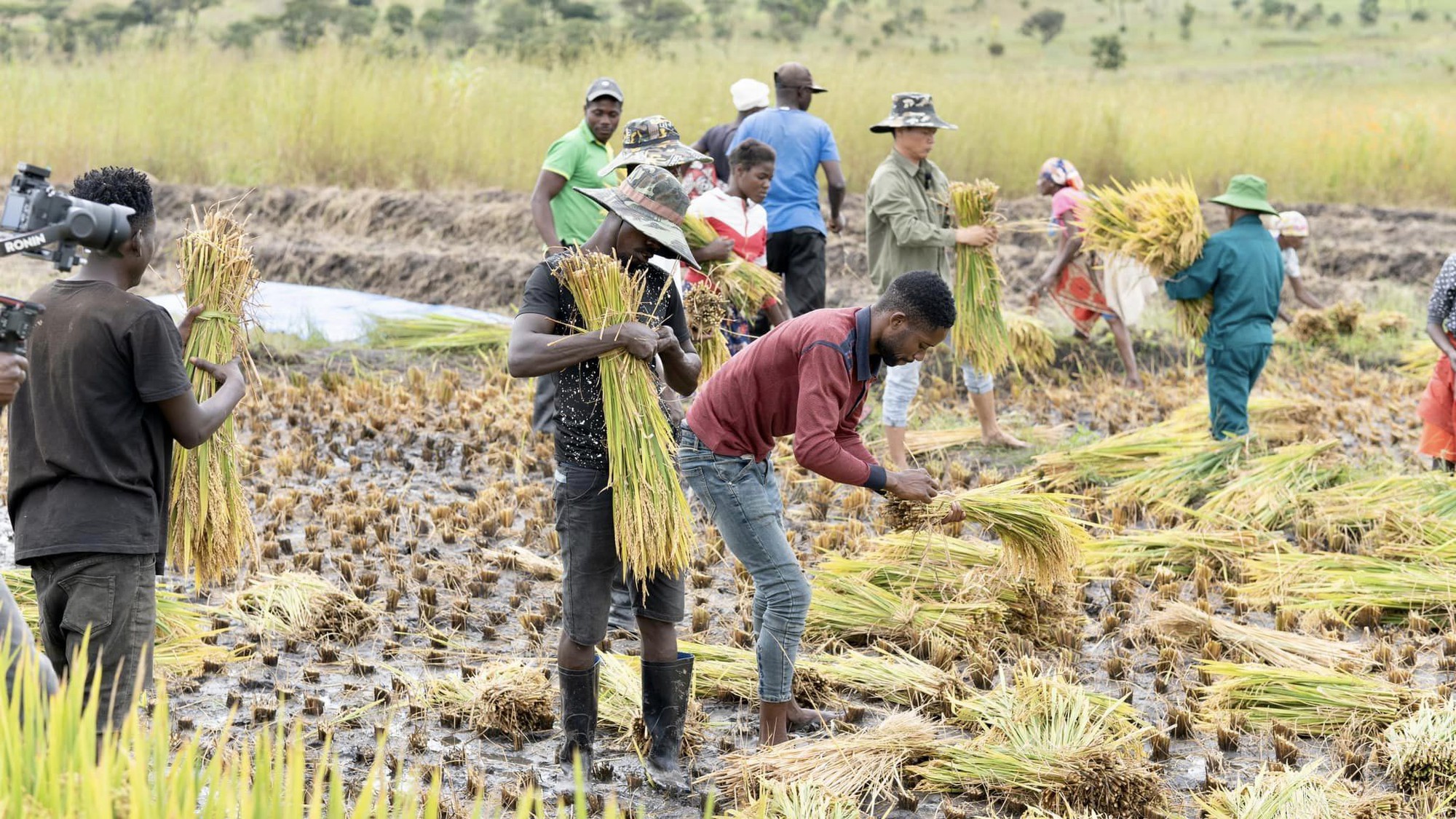
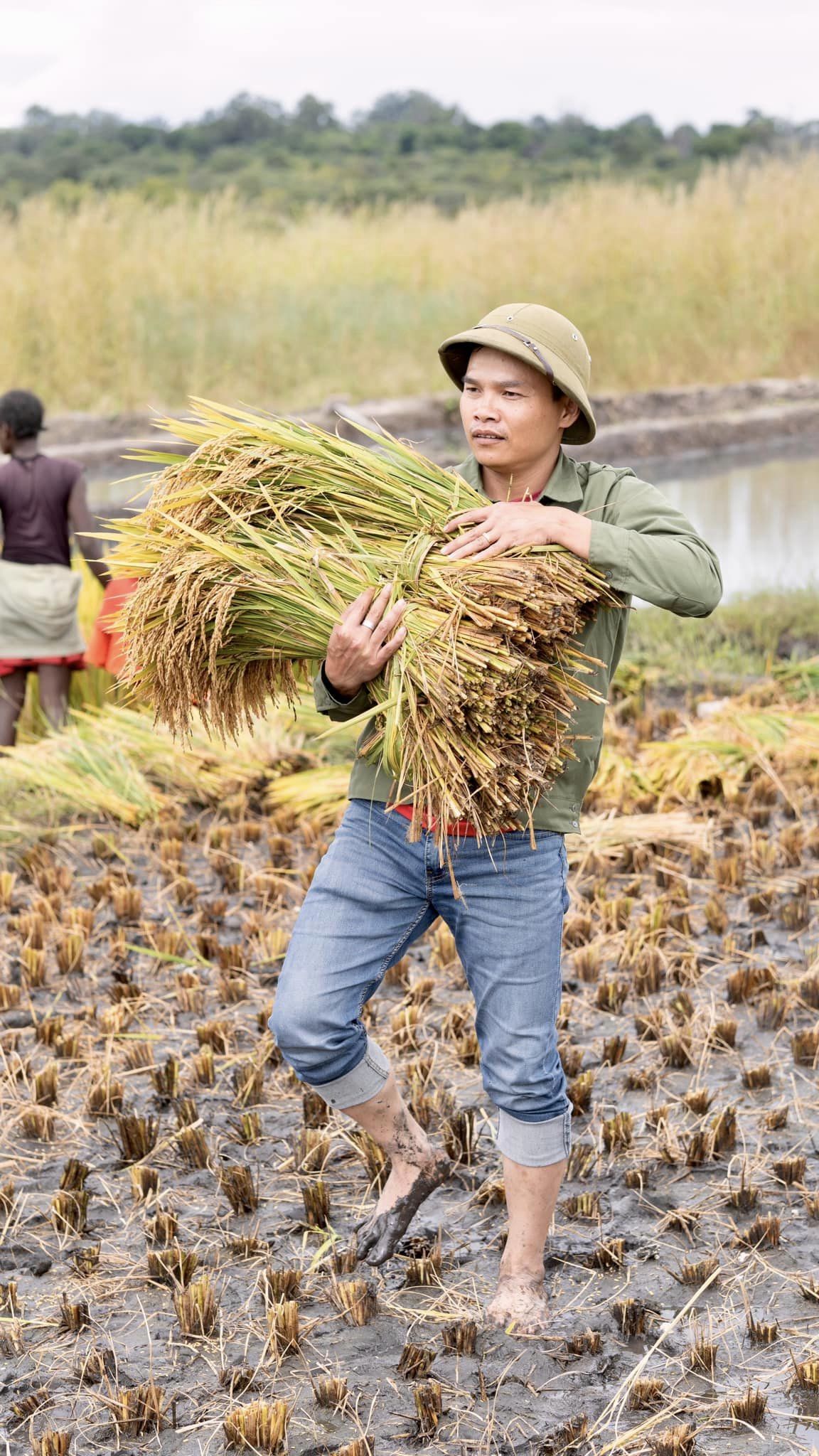
Mr. Linh Phillip said that their team of Vietnamese helped the Bota villagers build a church. Partly because they wanted to “return the favor”, and partly because they were curious about rice farming, they came to help the farm for a few days. The atmosphere was very lively, with some women bringing their small children along and still participating enthusiastically.
With many people working together, the harvesting process was very smooth, with continuous cutting and threshing: One group specialized in harvesting rice, one group specialized in transporting it to the threshing area, and one group specialized in threshing and drying the rice.
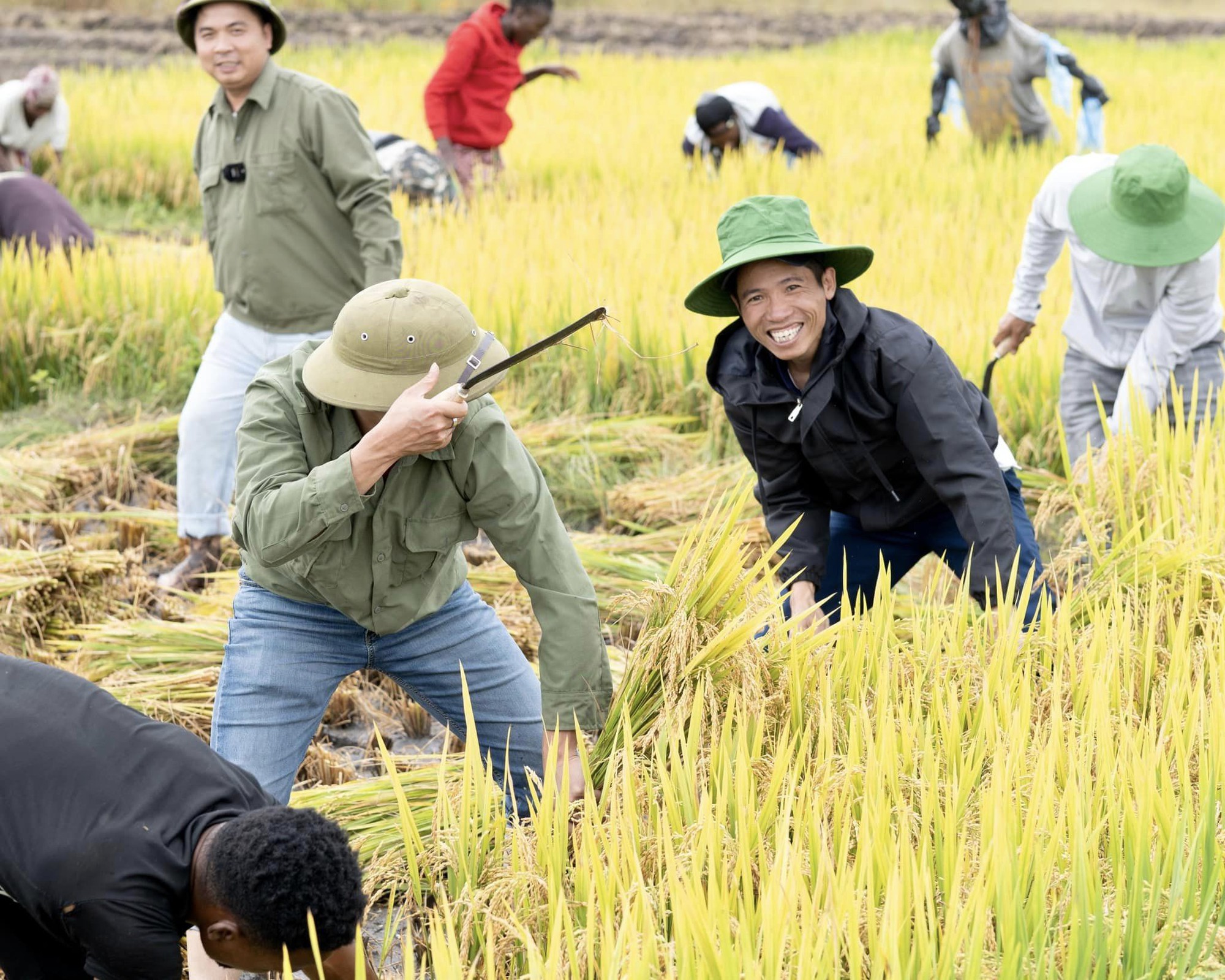
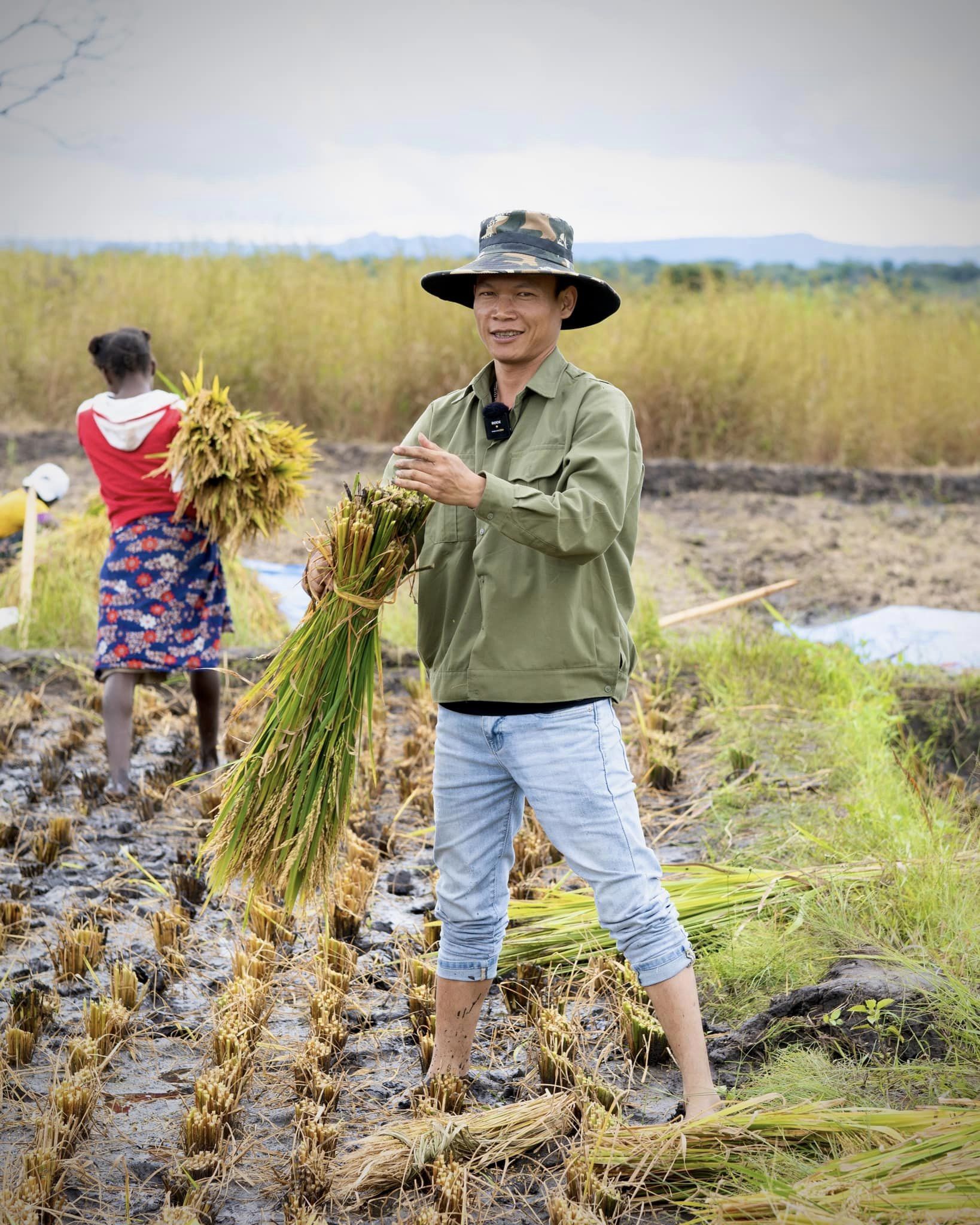
Going to the rice field to watch the harvest, the farm owner was quite satisfied when he saw the fields with only straight stubble left. In order for the workers to harvest the rice properly and make use of the straw, Linh Phillip even had to order sickles from Vietnam instead of using local knives.
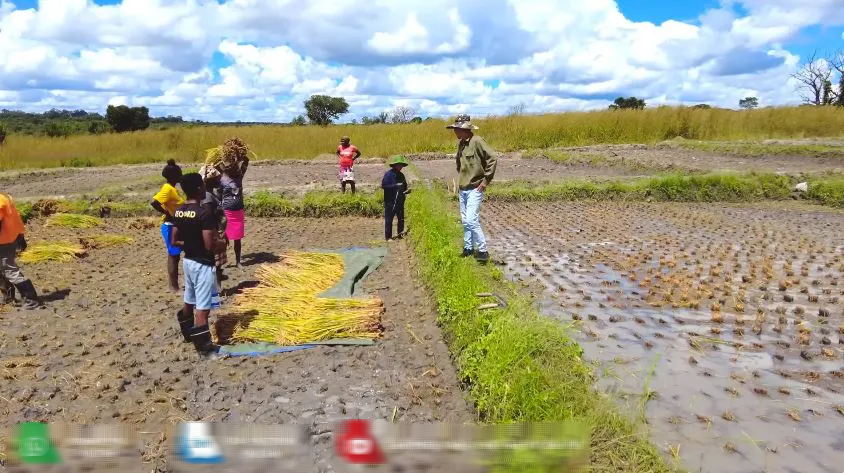
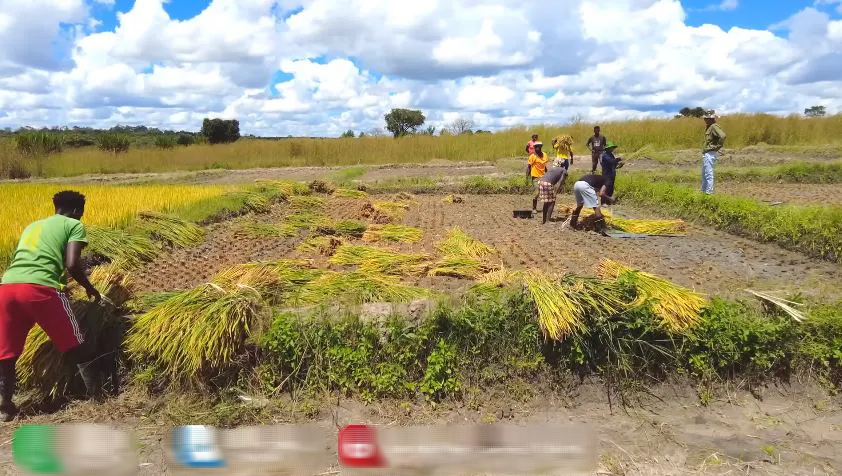
As for threshing the rice, the team built handmade threshing tables, similar to those used in Vietnamese cooperatives during the rationing period.
Although it was simply assembled from a few wooden boards and planks, this rice threshing “technology” amazed the Angolans. The villagers kept praising the cleverness of the Vietnamese, who had created such a simple yet effective tool.
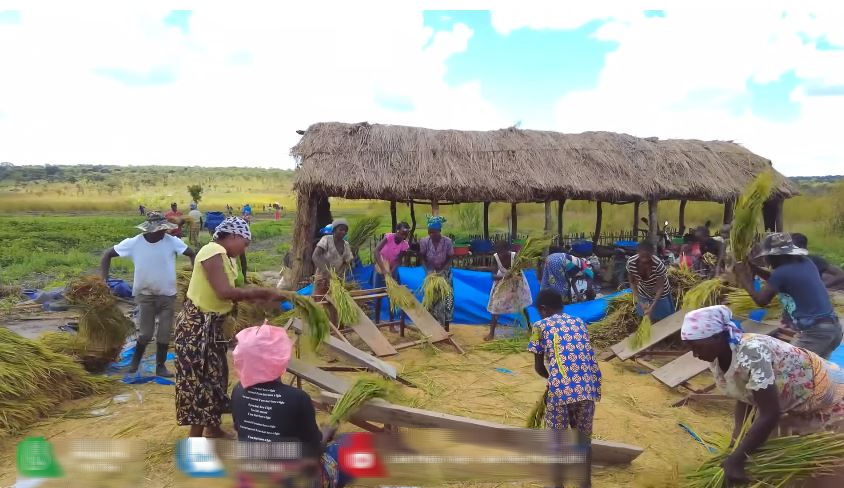
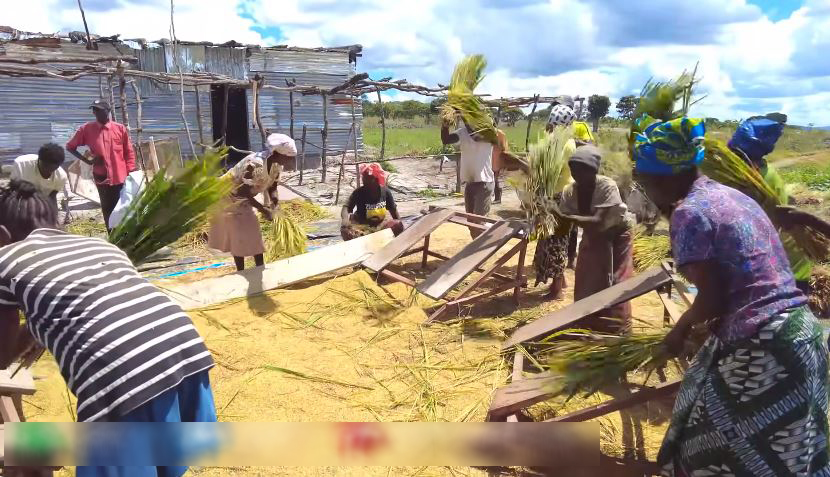
Bumper First Rice Harvest, Trial of New Crop
In Angola, many areas still do not have rice cultivation. Wet rice is even more unfamiliar, because everything from planting to care requires skill and high techniques. Therefore, the fact that Linh Phi farm successfully planted wet rice right from the first crop is considered a miracle.
“Planting rice for the first year was really hard, because it was difficult to prepare the soil, and there was not much soft mud in the field. To be able to achieve a yield of 1.5 tons in the first crop, it was already a proud achievement for us. This year’s rainy season is wonderful“, said Linh Phillip emotionally.
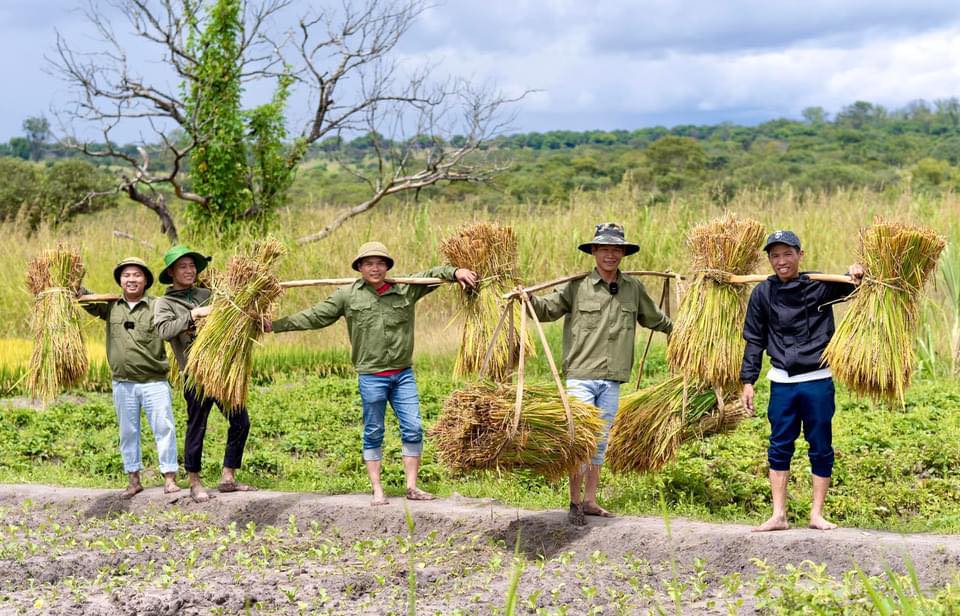
After harvesting about 40 bags of rice, the farm owner planned to keep 6 bags for storage, and the rest would be milled into




